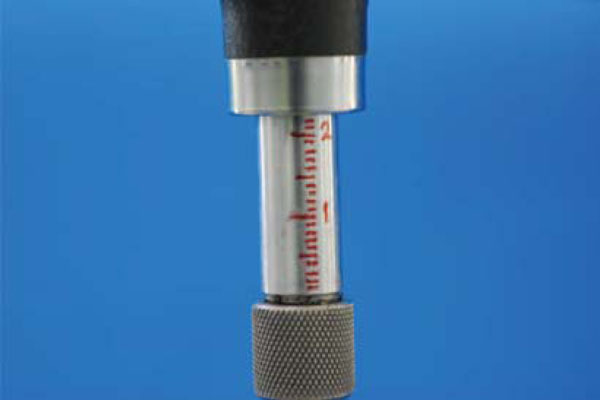All published articles of this journal are available on ScienceDirect.
Recording the Tilt of a Cast on a Surveyor
Abstract
Some patients are not satisfied with removable partial dentures (RPDs), when it is not stable during mastication.A dental surveyor can be used to prevent problems related to production of RPDs. Determining the best path of insertion and removal is an initial and fundamental step in RDPs planning. The path of insertion record enables the technician to reproducing the cast in the same position on a surveyor that the dentist selected. This article describes new method for this purpose that could be useful for recording and reproducing the tilt of casts.
INTRODUCTION
Removable dental prosthesis (RDP) is a choice of treatment of partially edentulous patients when fixed dental prostheses or implant-supported restorations are contraindicated due to economic, technical and biologic concerns.
The cast may be returned to the surveyor for trimming block out on the master cast or locating clasp arms in relation to undercut areas [1]. Appropriate analysis of the cast is one of the important and essential steps in preparation of RDP [2-4].
The clinician Surveys the diagnostic cast to design an adequate planning for RDP framework [5]. The path of insertion is determined with the surveyor regards to height of contours, guiding planes, interferences and esthetics for adequate retention, stability, support and esthetics for RDPs [3].
The path of insertion should be recorded on the diagnostic cast in order to be transferred into the definitive or working cast. Also the path of insertion record enables the technician to reproducing the cast in the same position on a surveyor that the dentist selected.
Traditional methods only allow repositioning of the cast on characters, which have been placed; but, accurate reproducing of this cast or the other casts such as duplicated casts on the surveyor may be difficult [1].
There are several methods for recording the tilt of a cast in surveyor [6-9].
Conventional method for recording the cast orientation includes tripodization method, to establish a plane of orientation with this method several areas on the cast needed and horizontal marks are placed on three divergent anatomic areas of the cast. Another method is the scoring method. In this method three vertical marks are made along the base of the cast on the posterior and lateral sides [10]. The analyzing rod of the surveyor is aligned with all three marks for reproduction of the cast. These methods allow reproduction of the cast on marks, which have been placed; however, correct reproduction of this cast or the other casts such as duplicated casts on the surveyor may be sometimes difficult [11].
Shakibamehr, et al. identified a method with using acrylic resin index, thereby shrinking the acrylic resin may result in inaccurate adaption of the acrylic index on the teeth occlusal surfaces [12].
This article describes another method for this purpose that could be useful for recording and reproducing the tilt of casts.
MATERIALS AND METHODS
This article describes an effective method for recording the cast orientation on the surveyor table and reproducing this orientation to other casts using an additional constructed device.
1. Gradate the surveyor spindle into millimeters degrees (Fig. 1).

Surveyor spindle with millimeters degrees.

Each screw touches a point on the cast.
2. Attach three narrow strips (Vanguard, Kuala Lumpur, Malaysia) two (short) with 5 and one (long) with 7 holes from one side to a hand-piece mandrel (Sunva, Jiangsu, China) (Fig. 2).
3. Attach a screw and nut (Vanguard, Kuala Lumpur, Malaysia) to the other ending holes of two short narrow strips.
4. Fasten the mandrel screw in the surveyor spindle.
5. Adjust the two short narrow strips until screws touch two points on the cast.
6. Place a screw in a hole in the long narrow strip where the screw touches another point on the cast (Fig. 2).
7. Relate each point on the cast to corresponding narrow strips and record this relation in the patient file.
8. Record the length of the surveyor spindle from surveyor gradation and the hole that used in long narrow strip.
9. Set the recording device and surveyor spindle to the correct lengths.
10. Change the tilt of the cast until all screws touch the points on the cast.
DISCUSSION
The advantages of this method include accurate reproducing of diagnostic cast, duplicated or definitive cast on the surveyor with the same recording device.
Tripodization and scoring methods need major working time, they are not accurate and only useful for reproducing the tilt of the cast that the tilt of it recorded. Shakibamehr, et al. identified a method with using acrylic resin index, thereby shrinking the acrylic resin which may result in inaccurate adaption of the acrylic index on the teeth occlusal surfaces [12].
Need for additional device and time for constriction of the device are disadvantages of our method. More studies are needed to evaluate and compare the accuracy of available techniques.
CONCLUSION
The reproduction of the casts on the surveyor can be performed rapidly on duplication, definitive casts or when new analysis is required . This method allows for the precise reproducing of the path of insertion for the patient.
CONFLICT OF INTEREST
The authors confirm that this article content has no conflict of interest.
ACKNOWLEDGEMENTS
Declared none.


